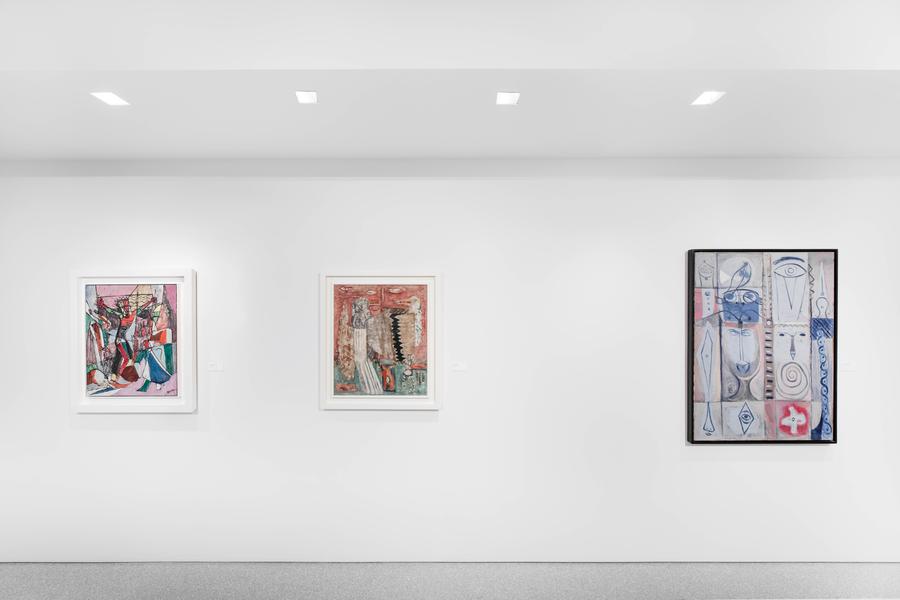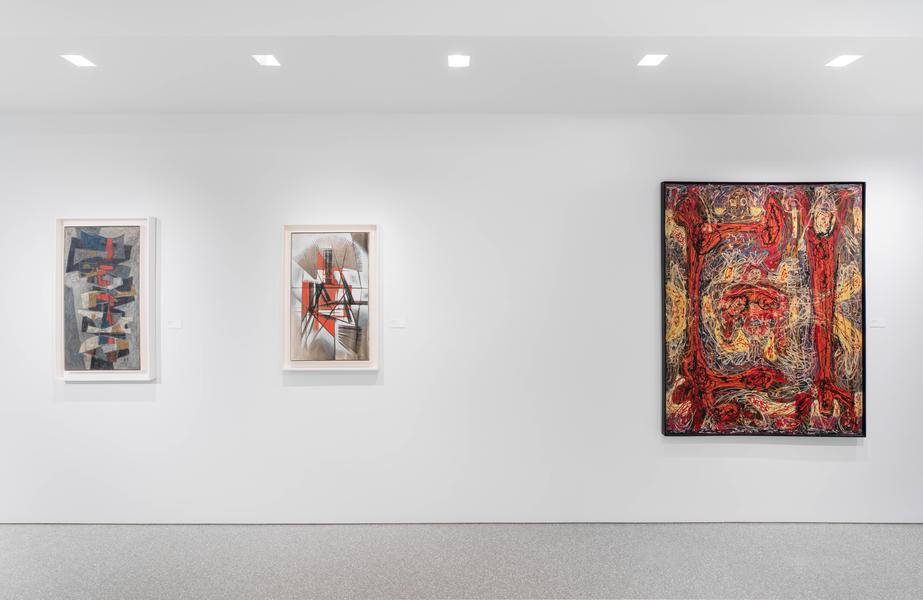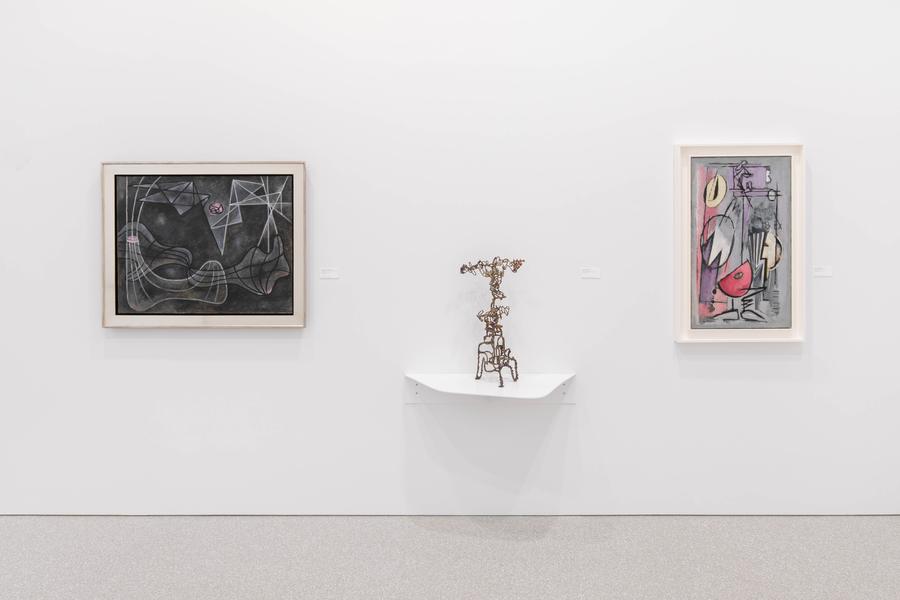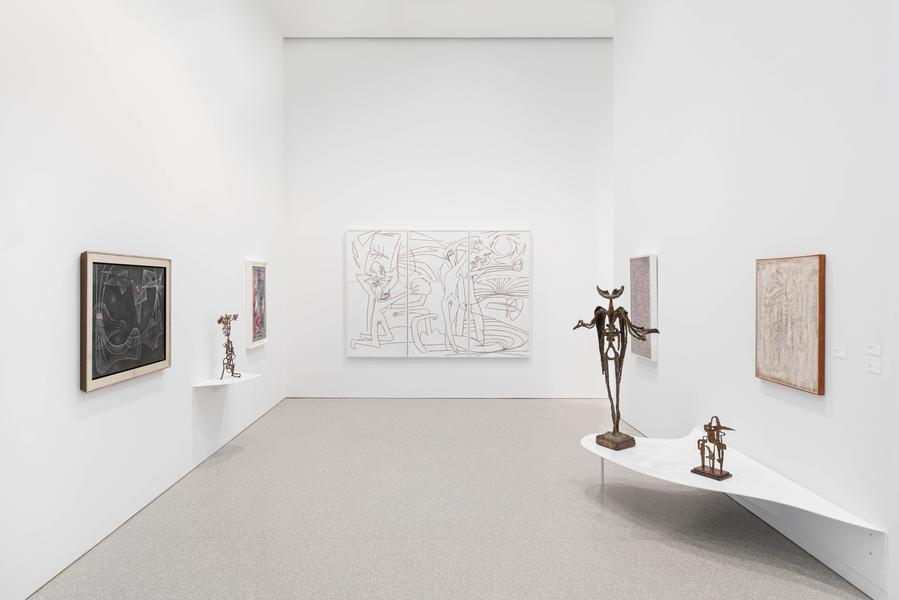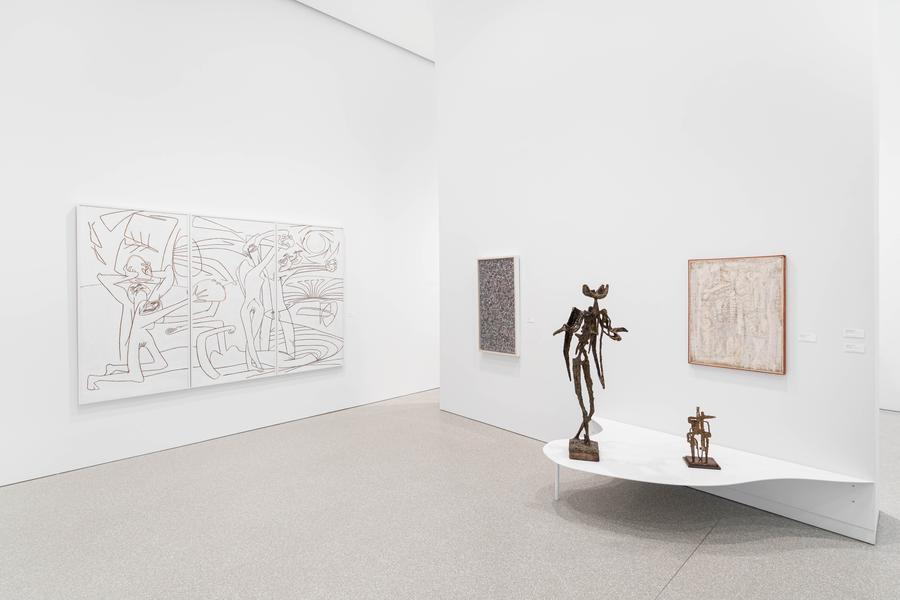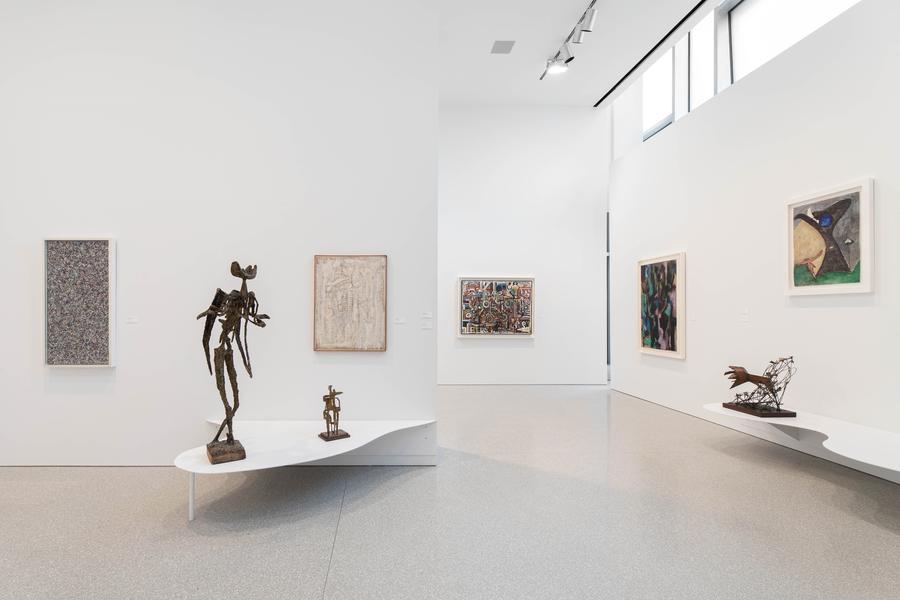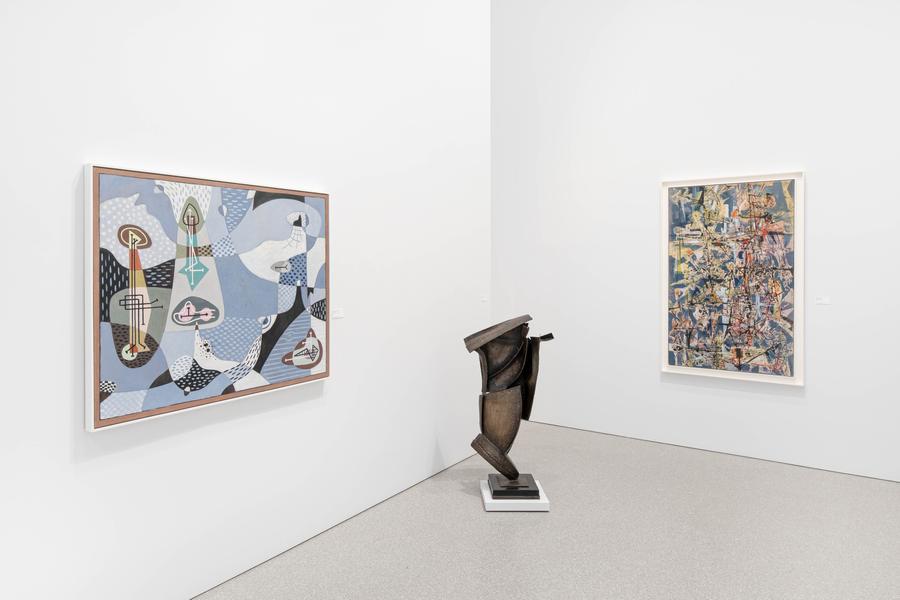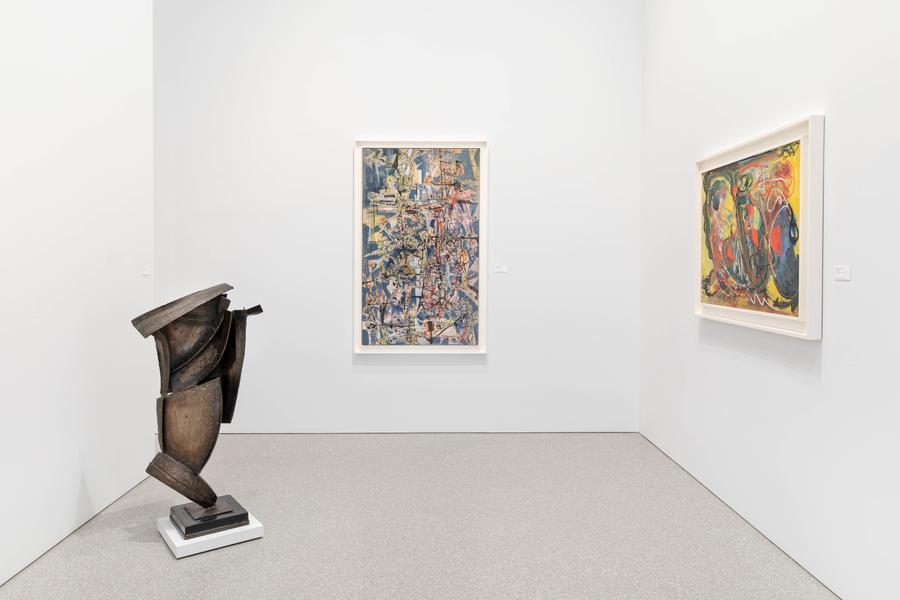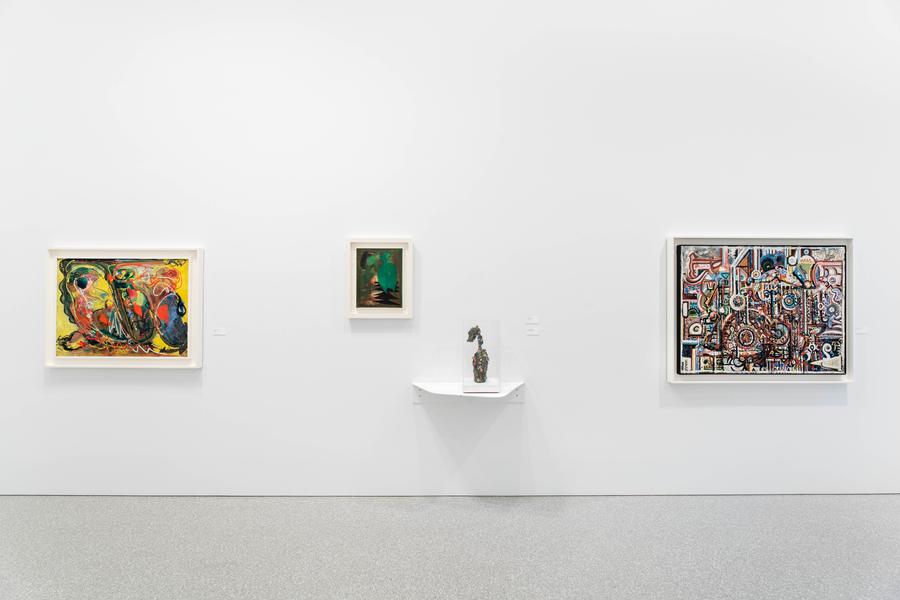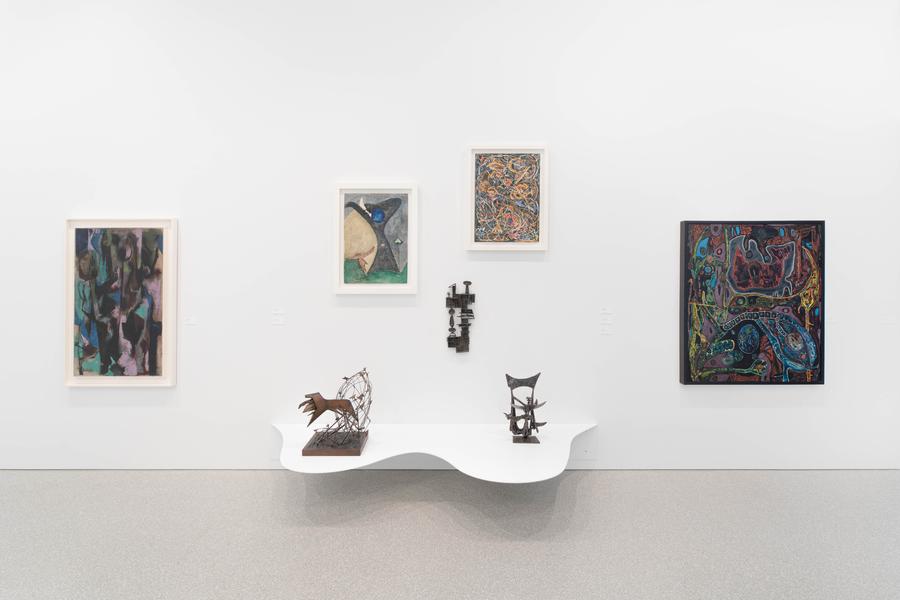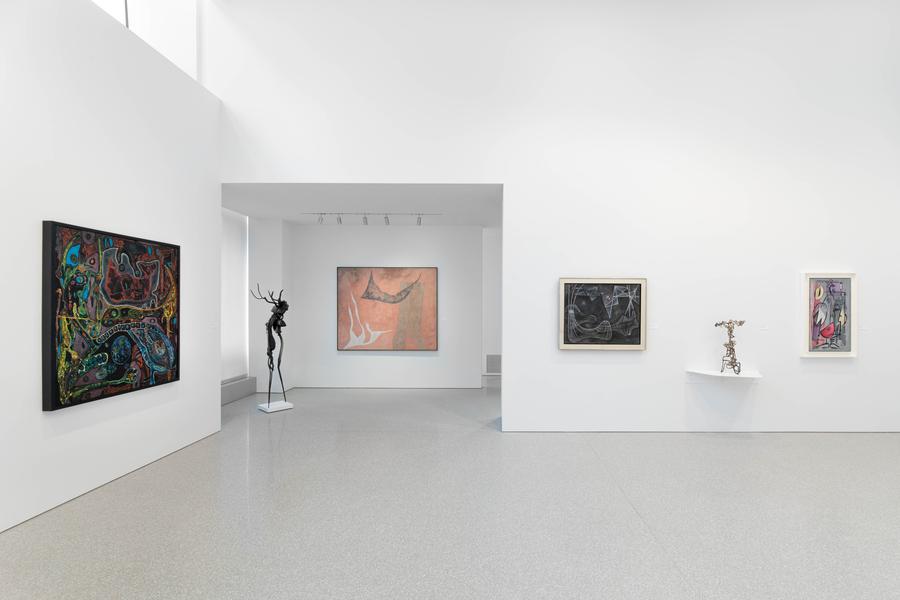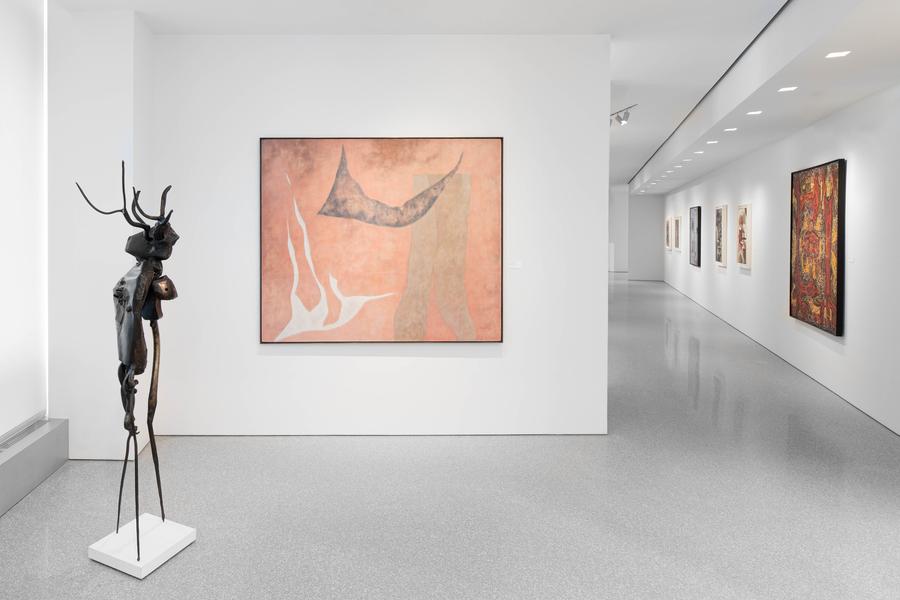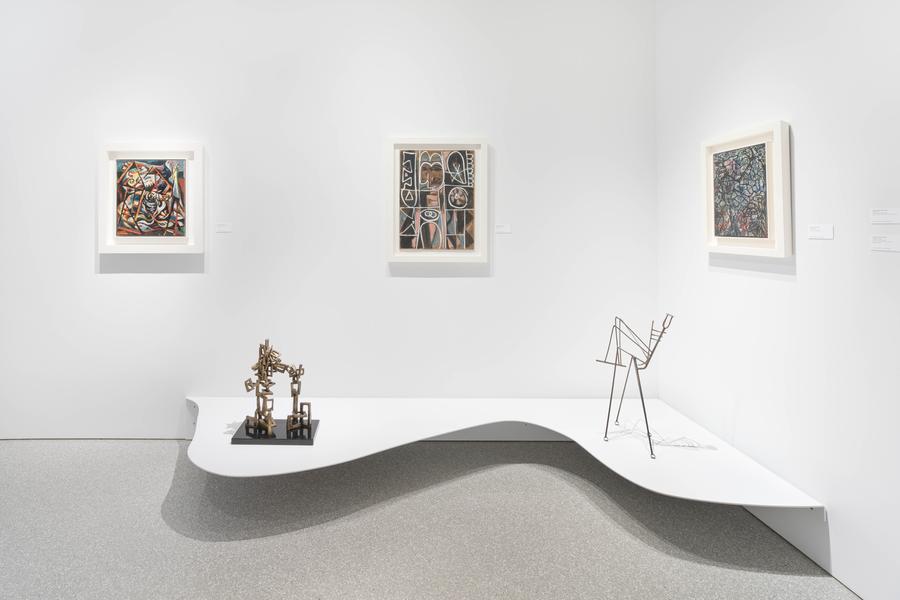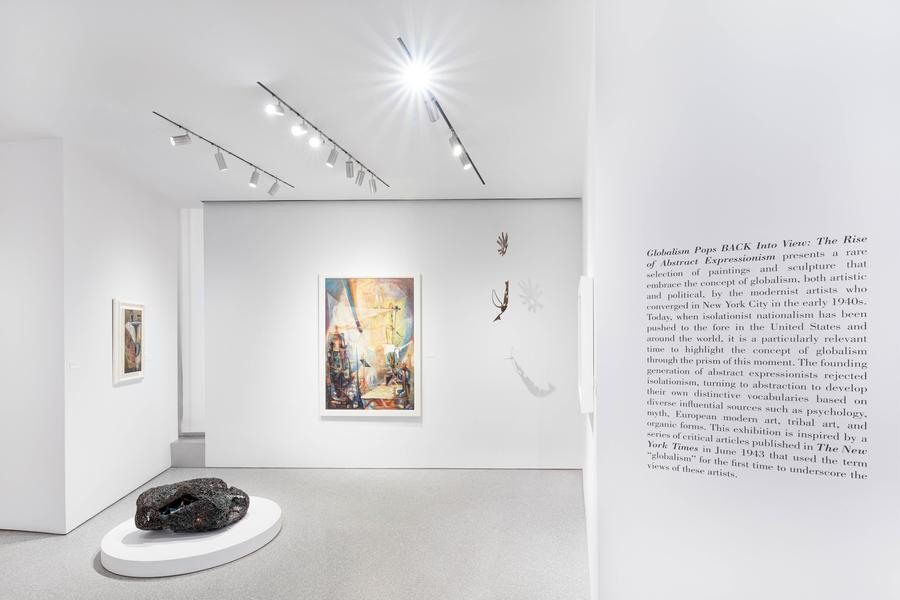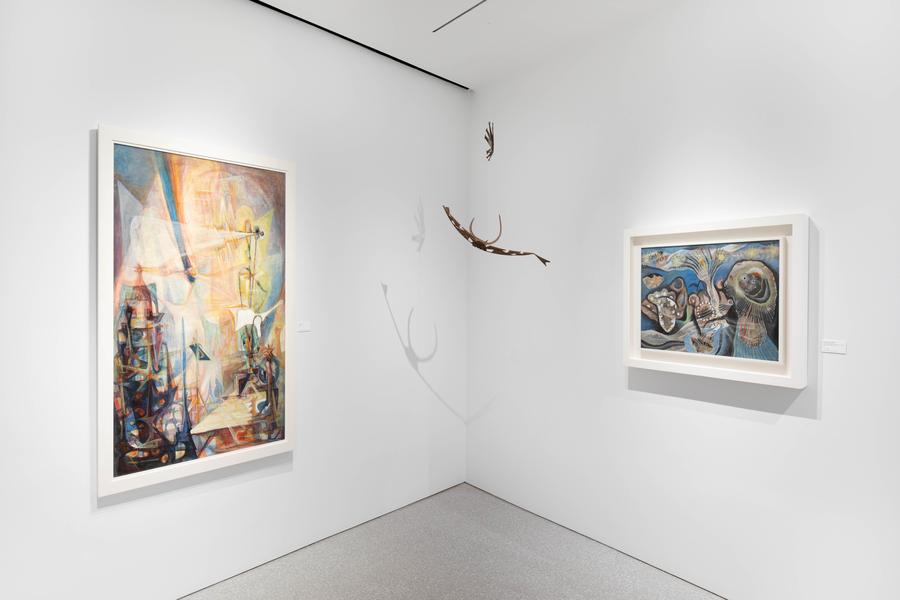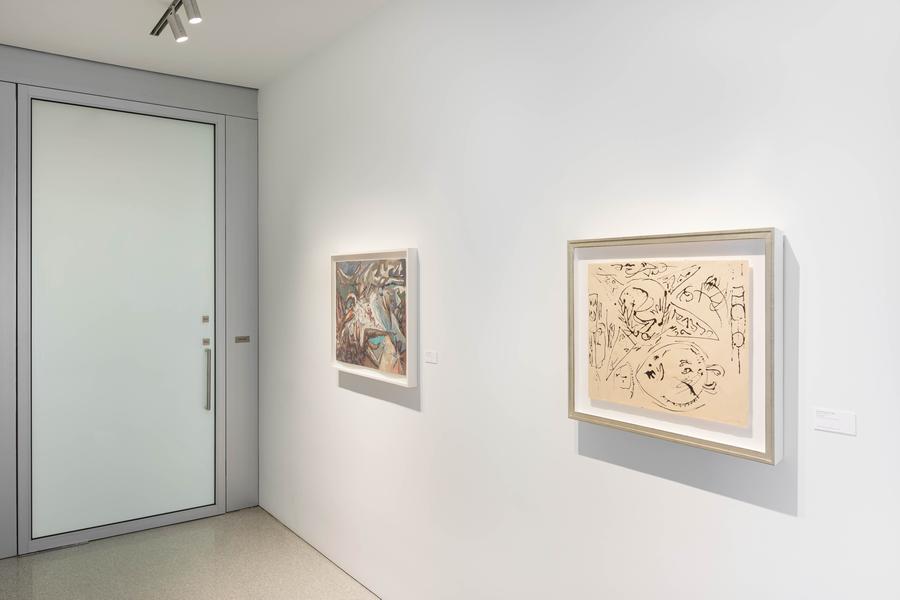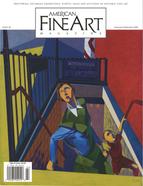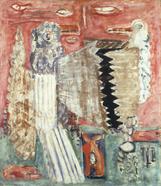Opening Reception
Thursday, November, 21, 2019 / 6:00–8:00PM
“Now that America is recognized as the center where art and artists of all the world must meet, it is time for us to accept cultural values on a truly global plane.”[i]
—Federation of Modern Painters and Sculptors, New York, 1940
“All genuine art forms utilize images that can be readily apprehended by anyone acquainted with the global language of art. That is why we use images that are directly communicable to all who accept art as the language of the spirit, but which appear as private symbols to those who wish to be provided with information or commentary.”[ii]
—Adolph Gottlieb, 1943
Michael Rosenfeld Gallery is pleased to present Globalism Pops BACK Into View: The Rise of Abstract Expressionism. The exhibition, scheduled to be on view from November 21, 2019 to January 25, 2020, will feature a selection of paintings and sculpture by the modernist artists who converged in New York City in the early 1940s and embraced artistic and political globalism. Globalism Pops BACK Into View was inspired by a series of critical articles published in The New York Times in June 1943 that used the term “globalism” for the first time to underscore the views of these artists. The exhibition contextualizes a world-altering time when New York became the center of contemporary art—a time made particularly pertinent again by the isolationist and nationalist views that have now come to the fore in the political and social world of the early twenty-first century.
The exhibition will include works by Charles Alston, William Baziotes, Romare Bearden, Harold Cousins, Dorothy Dehner, Jimmy Ernst, Claire Falkenstein, Herbert Ferber, Michael Goldberg, Arshile Gorky, Adolph Gottlieb, David Hare, Hans Hofmann, Richard Hunt, Gerome Kamrowski, Lee Krasner, Ibram Lassaw, Norman Lewis, Seymour Lipton, Boris Margo, Roberto Matta, Gordon Onslow Ford, Alfonso Ossorio, Jackson Pollock, Richard Pousette-Dart, Theodore Roszak, Mark Rothko, Charles Seliger, Janet Sobel, Theodoros Stamos, Bradley Walker Tomlin, Laurence Vail and Hale Woodruff.
“‘Globalism’ Pops into View” is the title of an article by conservative critic Edward Alden Jewell that was published in The New York Times on June 13, 1943. Jewell linked globalism to a group of modernists exhibiting in New York while denigrating their work. Among them were artists later called abstract expressionists, who were already expressing their intention to create their own personal and distinctive visual vocabularies, using the language of abstraction, to communicate global symbols that reach for universal meaning to viewers throughout the world. Among the major sources of their work is the Jungian belief of myth as archetype, symbolic of the universal unconscious, as well as cubist structure and the surrealist method of psychic automatism.
Jewell was responding to work by artists, particularly Gottlieb and Rothko, who participated in the Third Annual Exhibition of the Federation of Modern Painters and Sculptors. The progressive collective wrote: “We condemn artistic nationalism which negates the world tradition of art at the base of modern art movements…Since no one can remain untouched by the impact of the present world upheaval, it is inevitable that values in every field of human endeavor will be affected. As a nation we are being forced to outgrow our narrow political isolationism. Now that America is recognized as the center where art and artists of all the world must meet, it is time for us to accept cultural values on a truly global plane.”[iii]
The artistic community of early 1940s New York was outspoken in its rejection of political and artistic isolationism, turning instead to abstraction. Artist Barnett Newman was one of the most prolific critics of regionalism and in his 1942 essay “What About Isolationist Art?” he railed against the regionalists as “enemies of world progress” and predicted the rise of such anti-globalists again in the future. In general, the modernists were spurred by the 1943 publication of the best-selling book One World by Wendell Willkie. They were also encouraged by their own camaraderie and by the many modernist exhibitions in New York, held at the Museum of Modern Art and at several galleries, including Peggy Guggenheim’s Art of This Century and the Betty Parsons Gallery. Their development was also greatly advanced by the many leading European modernist artists who came to New York City to escape the War. In addition, their art was shaped by their knowledge of a varied combination of international sources in a number of fields outside modernist art, including philosophy and psychology; myth, particularly through the ideas of Carl Jung and Friedrich Nietzsche; tribal art and culture; poetry, especially the French symbolists; Chinese and Japanese art and ideas; the natural sciences; and more. The synthesis of all these connections stimulated their search for significant content with global relevance—and made it possible.


